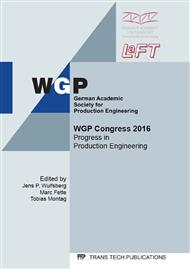p.228
p.239
p.247
p.255
p.264
p.272
p.280
p.288
p.296
New Approach for the Efficient Manufacturing of Sandwich Structures Based on Sheet Moulding Compounds
Abstract:
Today's sandwich structures and materials offer a high potential for lightweight design and are being used in various industrial applications. However, the material and manufacturing costs for structural sandwich structures in aerospace and automotive industry are comparatively high. Furthermore the production of lightweight and functional composite-sandwich components is usually characterised by long manufacturing lead times and a high level on manual workload. In this context the production of lightweight, functional and geometric complex sandwich structures consisting of SMC layers and closed cell rigid foams as core material in a single-step compressing moulding process is very promising. By using such a process new design approaches, a high level of functional integration as well as excellent cost, material and resource efficiencies can be realised. This paper deals with the new manufacturing approach, first experimental investigations on the mechanical properties and the estimated potentials for using these high-efficient, lightweight sandwich structures in aviation and automotive industry.
Info:
Periodical:
Pages:
264-271
Citation:
Online since:
August 2016
Authors:
Keywords:
Price:
Сopyright:
© 2016 Trans Tech Publications Ltd. All Rights Reserved
Share:
Citation:


